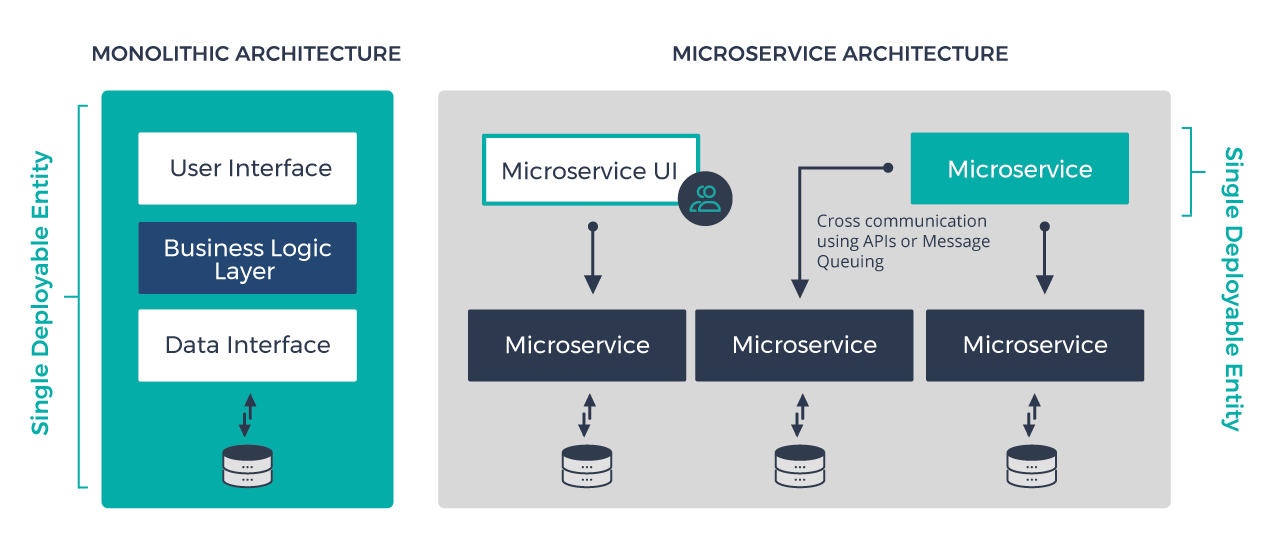Microservices architecture a primarily variant of the service oriented architecture (SOA) architectural development style. It is primarily a specific method of software development technique that focus on building applications as a collection of loosely coupled services. Each of these services focused on a single function with well-defined interfaces and operations.

Breaking-down a larger monolithic application design into microservices that are fine-grained with lightweight protocols, helps improve overall modularity of application.
Smaller teams can do parallel development, testing, deployment and scale each service independent of the other services.
Microservices Architecture Implementation
Microservices architecture has increased adoption by many organizations today, with many large enterprises having achieved great success with its implementation. As it has helped them be more agile and manage scalability challenges far better as compared to Monolithic applications.
However, despite all its benefits, Microservices requires a certain level of organization level process maturity due to its high focus on continuous delivery and process automation. It increases operational burden as there are far more number of things to monitor with large number of alerts, and deployments. So only organization which have fully implemented complete automation and continuous delivery practices tend to be successfully in its implementation. While others struggle through the phases to maintain and sustain its full implementation.
Having a distributed design and deployment architecture increases complexity for testing the business processes. This in-turns makes it more tedious as it often has to interact with multiple other Microservices. Therefore, each interaction point between the Microservices could be a possible source of failure compared to a monolith design. Thus, each of these interactions points needs to be specific handled. While developers face additional complexity as they need to handle fault tolerance, network latency and right message handshakes between microservices and handling any load balancing related issues.
Microservices Architecture and Design Best Practices
Compared to a monolithic service call a Microservices inter-services call has a higher network latency. Also, message responses takes longer processing time.
A key design decision involves placement of the boundaries between services, an incorrect boundary definition might complicate the system. Increased in the number of services compared to monolithic systems increases integration efforts, challenges. It also adds an additional layer of complication in deploying and managing these services.
Thus the decision to implement Microservices architecture and breaking up your current Monolithic system needs to be a properly thought through with proper through comparing the benefits of scalability, flexibility with the need for a higher degree of automation and continuous delivery process.


